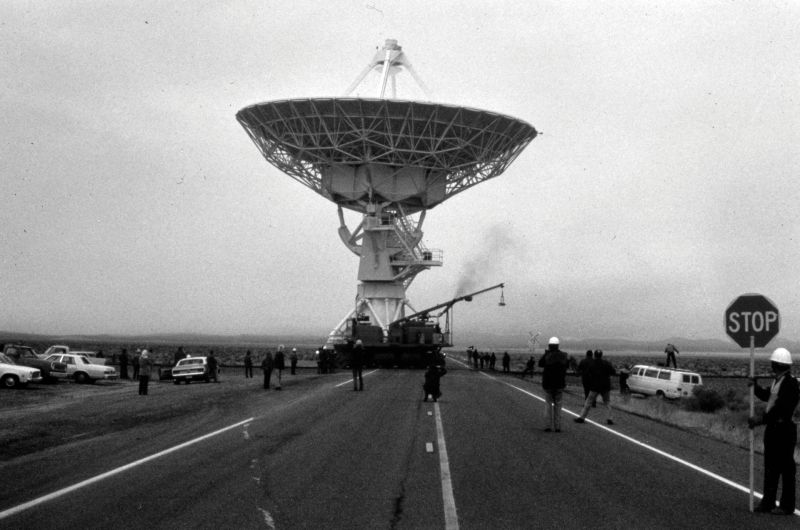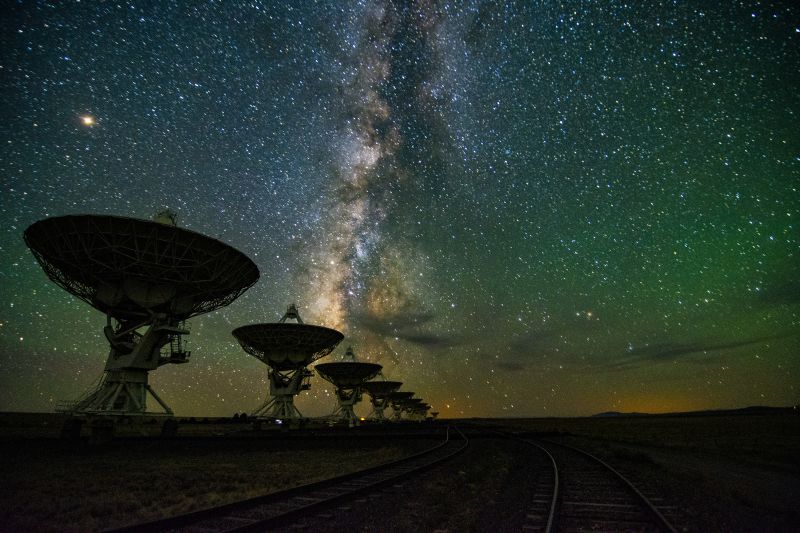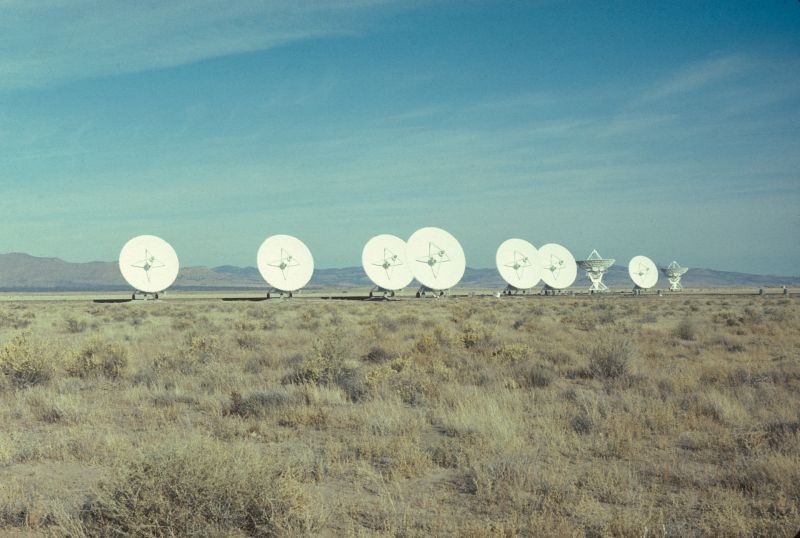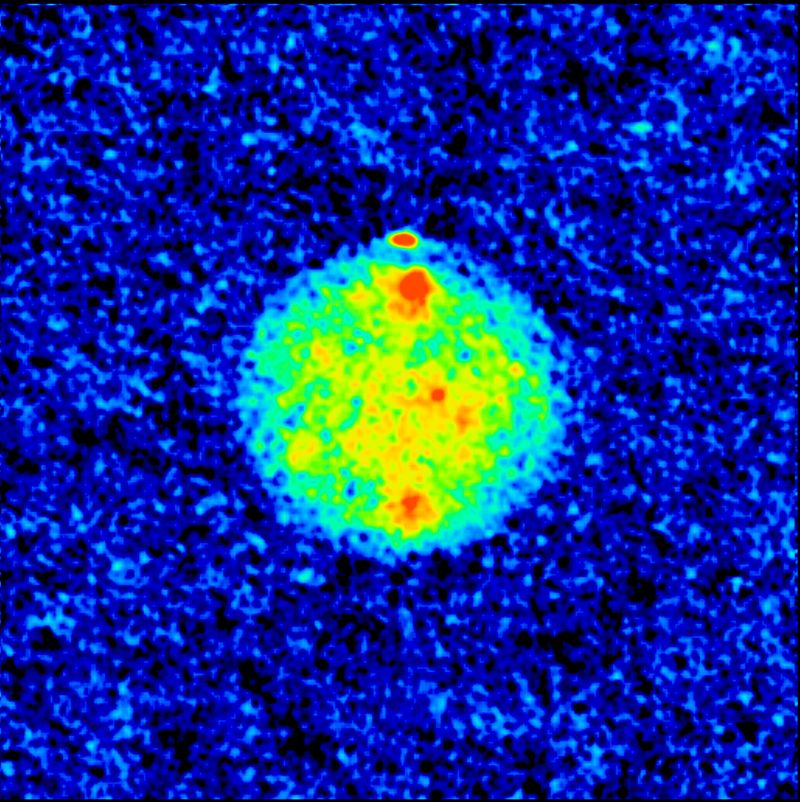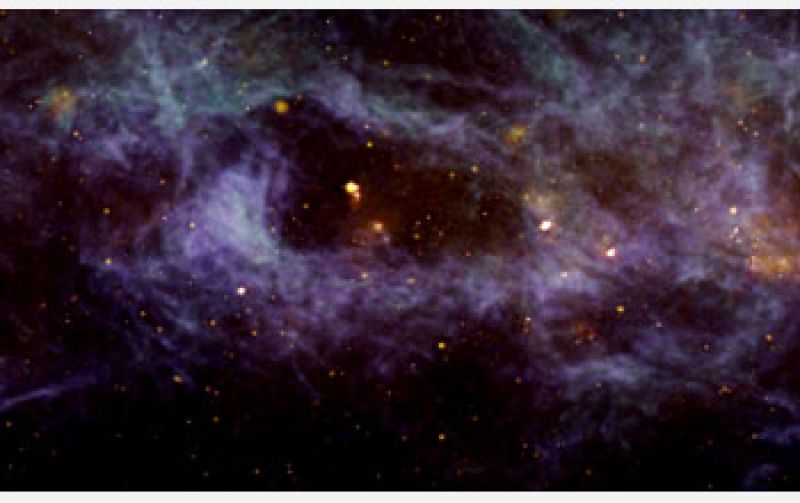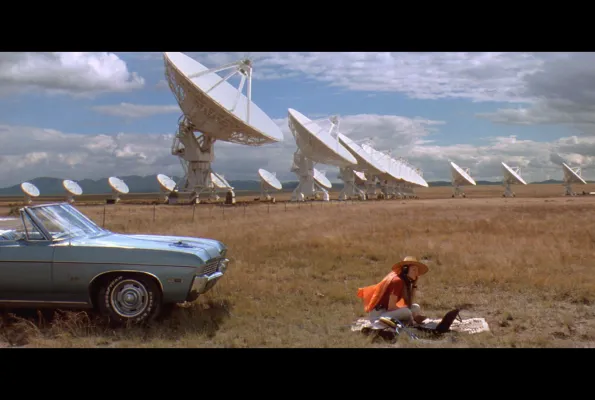
VLA is turning 40
Everything you need to know about the most versatile, widely used radio telescope in the world
Since its formal dedication 40 years ago this week, NSF’s Karl G. Jansky Very Large Array has facilitated key discoveries about our universe, pushed forward the technical capability of radio astronomy as a field, and even served as a high-precision spacecraft tracker for NASA and the European Space Agency. Widely recognizable for its cameo appearance in the 1997 blockbuster film Contact, VLA’s off-screen record is even more impressive—VLA has supported more than 3,000 researchers from around the world and over 11,000 different observing projects over the past 40 years. Plug in your headphones and stretch out on the hood of your baby blue convertible as we dial in everything you need to know about radio astronomy and this historic telescope.
1. A new window on the radio universe:
Though somewhat of an oversimplification, while optical astronomy focuses on the stars, radio astronomy focuses on the space between the stars, revealing previously undetectable cosmic wonders. Brimming with material emitting radio photons, this space provides crucial information for astronomers studying the age and composition of the universe. Since the mid-1950s, NSF has supported the National Radio Astronomy Observatory, which is, as its name suggests, a national observatory devoted to radio astronomy. In 1972, Congress approved NSF’s plan to build a new NRAO radio telescope on the Plains of San Agustin in New Mexico. Its remote location is crucial to its success. Because the VLA searches for cosmic radio waves, which are billions of times fainter than the radio waves that transmit music to your car stereo, it needs to be protected from any interference produced by many of the technologies that we use every day. Humidity can also distort radio astronomy observations, so the desert climate of the region is also key.
2. Karl G. Jansky’s accidental discovery:
The cosmic photons that the VLA has observed over the past 40 years, leading to key discoveries about the universe, were discovered by accident. In the early 1930s, engineer Karl Jansky, for whom VLA is named, set about studying the problem of static interference, which disrupted Bell Telephone’s trans-Atlantic shortwave voice transmission service. Using his antennae to track the static’s peculiar timing and location in the sky, Jansky discovered that he detected the greatest static when pointing his antennae in the direction of the Milky Way—confirming that its source lay beyond the earth’s solar system, originating in interstellar, galactic material. Though Jansky began his observations with the aim of reducing the noisy interference experienced in radio communications, his discovery of cosmic noise opened up a new scientific tool by which to probe the mysteries of the universe.
3. 27 dishes form one giant radio telescope:
The VLA is made up of 27 individual radio telescopes (plus one spare). Together, the dishes make up one large telescope that spans many miles and can make detailed observations of very distant objects. The dishes are located on rails so that their positions can be adjusted. The farther apart they are, the bigger the telescope’s eye is—and the more detailed view it can provide. The VLA’s website allows you to see what configuration it’s in today. You can also take a look at its live webcam.
4. Ice on Mercury:
In 1991, the VLA assisted in the discovery of ice on Mercury, the innermost planet of our solar system. Planetary scientists used NASA’s giant 70-meter antenna to bounce radio signals off the surface of Mercury, which were received by the VLA. Based on these signals, the VLA produced a radar image of Mercury. Researchers were shocked to find that the image contained evidence of water ice located at Mercury’s north pole—the strong radar reflection indicated by the bright red dot at the top of this picture. Just a few years later, researchers also confirmed the existence of ice at Mercury’s south pole.
5. Discovery of a black hole at the center of the Milky Way galaxy:
The center of our Milky Way galaxy, lying in the constellation Sagittarius, is one of the brightest radio sources in the sky. It was the first extraterrestrial radio source detected (by Jansky in 1932), but for years it remained mysterious. In 1982, Robert Brown of NRAO and Kenneth Johnston of the Naval Research Laboratory succeeded in observing the galactic center. Using the VLA, they discovered, at the center of a dust ring, an exceptionally small and luminous radio source whose core has a remarkable, spiral pattern. The evidence pointed to the existence of a black hole at the center of the galaxy.

